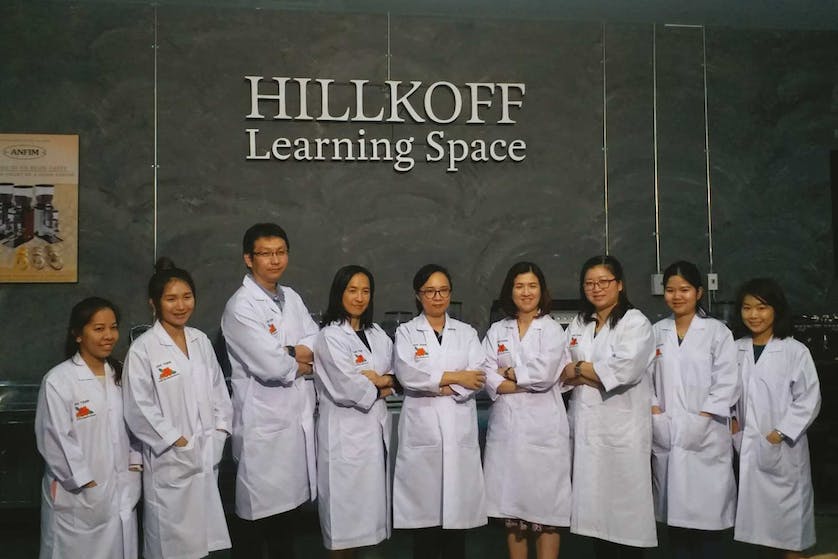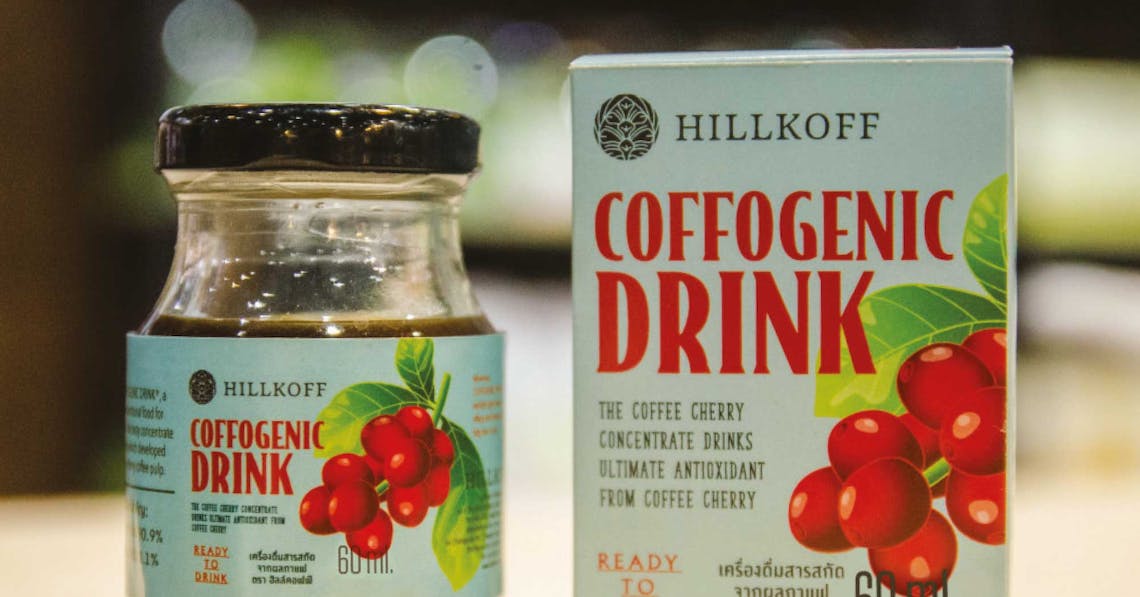Hillkoff, one of the first coffee suppliers in Chiang Mai, has long been stretching their vision beyond just serving a cup of coffee, and are now ready to work towards producing zero waste. “The process of collecting coffee beans from its cherries leaves us with a huge amount of pulp that rots quite rapidly,” said Naruemon ‘Poon’ Taksaudom, Managing Director of Hillkoff.
“The piles of pulp, if left to rot, will create waste water that can pollute the environment.” While seeking solutions for dealing with this large amount of waste, the first idea Hillkoff came up with was to turn it into fertiliser, something many other coffee producers do worldwide. “The coffee pulp makes a really good fertiliser, but its value is limited and so it’s not quite attractive to farmers,” explained Poon.
With support from the National Innovation Agency (NIA), Hillkoff has come up with an exciting new solution and product. They are able to produce tea from coffee pulp, a project that has met their zero waste goal. Yet, Poon says, the company isn’t fully satisfied and has continued to push further. “We know now that the pulp benefits our health in a variety of ways but the coffee cherry tea doesn’t quite yield that benefit as effectively as we want.” The coffee pulp is rich with chlorogenic acid (CGA) which also functions as an antioxidant, therefore a research funded by various groups such as Lanna Coffee Hub, RRi and TRF, was carried out by Hillkoff in collaboration with Chiang Mai University, University of Phayao and Maejo University to study the properties of the coffee pulp. Among many benefits of CGA in coffee, the research unveiled that it can significantly reduce cholesterol levels. What CGA does is it magnifies the size of cholesterol micelles, making our body absorb it less,” explained Poon as she presented research results on lab rats whose plasma lipid profile returned to normal after months of treatment when taking the coffee pulp extraction with lipid lowering drug; though taking the drug alone has not yielded such effective results. “What CGA does is it magnifies the size of cholesterol micelle making our body absorb it less.”

“With this research, we have succeeded in effectively extracting the coffee pulp,” said Poon, giving us an insiders’ tip that timing is the trick. Now the research is about to be conducted on people and she expects positive, and solid, evidence in the near future. “We applied for certification from the Food and Drug Administration but the problem is that the government does not have a regulation to support our product yet, it’s too innovative. And this research will be the first ever of its kind. Anywhere.”
“Coffogenic is functional and consumers can expect clear results. It benefits those especially with diabetes and those who are struggling with cholesterol. It’s a super food.” On the other end, this is another channel of income for the coffee farmers which is way better than just making fertiliser. “At the core of all this, is the impact to the farmers. If they have a motivation they will continue to not only grow the coffee but to grow it with care, and that can only benefit themselves as well as all consumers.”
